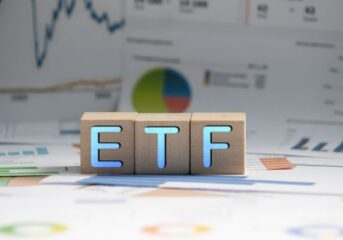Learn How to Trade Cryptocurrencies Like a Pro – Step by Step Guide
The volatility of cryptocurrencies leads investors to wonder how to trade cryptocurrency and make a profit. Learning how to trade cryptocurrency effectively isn’t easy. There’s lots to learn. The following is an overview of how to trade cryptocurrency for beginners. It’s a place to start the in-depth research needed to master cryptocurrency markets and mitigate the risks of beginner cryptocurrency trading strategies.

Introduction to Cryptocurrency Trading
Getting Started – Choosing the Right Broker or Exchange
Two ways to trade cryptocurrencies are to buy and sell directly via a cryptocurrency exchange, which means a trader owns the cryptocurrency. Or, an alternative is crypto contract-for-differences (CFD) trading, a type of derivative via a CFD broker where traders speculate on crypto price movements without owning the actual coins or tokens.
There are many factors to consider when choosing a cryptocurrency exchange. Firstly, traders should check if the exchange is legal in their country, if it’s reputable and trustworthy, and if it has a license to operate, any insurance, and any security controls and financial audits in place. Traders can also check if an exchange has sufficient liquidity, the trading fees, and how they work, as there are fee tiers to consider. New traders should also check the terms of an exchange and understand any deposit or withdrawal limits.
Next, it’s essential to understand whether the exchange is suitable for a beginner trader and to plan a trading strategy for beginners. Is there customer support? Does the exchange accept fiat currency? How many coins or trading pairs are listed? What trading dashboards and insights can the platform offer?
Creating Your Cryptocurrency Wallet
Traders might want to use an exchange or separate cryptocurrency wallet. Exchange and online cryptocurrency wallets are hot wallets and are less safe than cold storage options but offer much faster access to balances for traders.
Again, when choosing a cryptocurrency wallet, it’s important to consider reputation, security, ease of use, and functionality.
Creating an account with a cryptocurrency exchange will require personal information and, usually, identification. There might be a verification process under know-your-customer (KYC) and anti-money laundering (AML) requirements. Exchange and wallet users should use the maximum security on offer, such as strong passwords and two-factor authentication.
Funding Your Account
A cryptocurrency exchange that accepts fiat currency usually allows traders to fund their accounts with a debit or credit card; some will accept wire transfers. Traders with cryptocurrency balances can transfer crypto from their wallets to an exchange.
Understanding Cryptocurrency Basics
Cryptocurrency Fundamentals
There are two basic types of analysis cryptocurrency traders use to research: fundamental and technical.
Fundamental analysis takes a broad view of a cryptocurrency, including the wider market, and it assesses the crypto’s financials or tokenomics, its credibility and history, its community backing, and its utility beyond being a speculative asset. Fundamental analysis, researching crypto in depth, is one way to avoid riskier coins, tokens, and scams.
Types of Cryptocurrencies
There are thousands of cryptocurrencies, and several types have emerged since the first crypto, Bitcoin. Many of the coins that followed are referred to as altcoins.
Cryptocurrencies that have their own native blockchain are coins; examples are Bitcoin (BTC), Ethereum (ETH), and Litecoin (LTC). Crypto tokens usually represent a digitized asset, like an NFT or Meme, or they have particular utility in a blockchain-based project or platform.
Security tokens are a means of investment compared to utility tokens used to access products or services or get involved in blockchain project governance.
Another type of cryptocurrency is a stablecoin, the value of which is pegged to another asset, like the dollar, to keep its price stable and avoid the volatility inherent in most cryptocurrencies.

Technical Analysis and Trading Strategies
Technical Analysis
Cryptocurrency technical analysis assesses a crypto’s historical market performance. It looks at elements such as price or trading volume over time to understand how the cryptocurrency has performed in the market.
Technical analysis doesn’t consider broader market factors like news events, regulation, market sentiment, and how the crypto has utility apart from being a traded asset. These wider elements considerably impact crypto price performance, so traders need to conduct fundamental and technical analyses.
A technical analysis could consist of these elements and more:
- Analysis over a shorter or longer time frame
- Using technical indicators. Examples are moving averages, supply and demand zones, Relative Strength Index (RSI), or Bollinger Bands
- Chart patterns include head and shoulders, double tops/bottoms, triangles, and wedges.
- Identifying support and resistance levels
The use of charts and indicators will depend on knowledge, investment style, strategy, and time duration. Intra-day trading, for example, will heavily use candlestick charts and trading volumes to assess volatility and liquidity. Trading over a more extended time period will use bar or line charts, RSI, and moving averages to identify trends.
Fundamental Analysis
Fundamental analysis of a cryptocurrency could include these factors:
- The whitepaper, project roadmap, team, community, and tokenomics
- Market capitalization, liquidity, and volume
- The technology behind the crypto and its project
- Coin utility, governance, and consensus
- Crypto or blockchain competitors
- Regulation, security, and compliance
- Cryptocurrency and financial markets
- Crypto and market sentiment
Developing Your Trading Strategy
Trading strategy depends on the individual, risk tolerance, knowledge, and interest. Developing a trading strategy begins with extensive research into trading, cryptocurrencies, and cryptocurrency risks. A more comprehensive understanding of financial markets and factors such as regulation and cybersecurity are also beneficial. Learning how to trade cryptocurrency and make a profit will take time and potential losses, as crypto trading is a gamble.
Before deciding on a trading strategy, a trader should set objectives for trading, understand their finances, and set financial limits.
Day Trading vs. Swing Trading
Day trading and swing trading are two popular types of trading, and they differ considerably.
Day trading involves buying and selling cryptocurrencies quickly, usually within a day and is usually performed by full-time expert traders. Day trading strategies can be intra-day strategies, scalping, or momentum trading, and these strategies try to take advantage of short-term price fluctuations.
Swing trading is less intensive and is where traders take advantage of a market swing, usually over a few weeks. Swing traders are still responsive to market moves and will still use stop-loss orders and other methods to prevent losses and be ready to sell when the market changes.
Cryptocurrency Derivatives and Margin Trading
A cryptocurrency derivative is a product or contract with a value determined by an asset. Derivatives don’t have value themselves; they rely on the value of their underlying asset. Derivative trading isn’t buying or holding the underlying asset. Types of derivatives include futures, options, and perpetual contracts.
Crypto margin trading, or leveraged trading, is a type of trading where the trader uses borrowed funds to “bet” on the price of a crypto going up or down. Gains can be higher using “leverage,” but losses can be equally high.
Executing Your First Trade
Exchanges offer trading pairs. If the exchange accepts fiat currency, it will provide fiat-crypto pairs; for example, it will be possible to trade the US dollar (USD) for Bitcoin (BTC), and the trading pair will be USD/BTC. If a trader holds Bitcoin (BTC) and wants to buy Ethereum (ETH), the trading pair will be BTC/ETH.
A first trade will involve placing an order (using a fiat or crypto balance) for the required cryptocurrency. A cryptocurrency exchange will match an order for the lowest-priced offer in its system. If buying with fiat currency, the exchange will take the fiat from the user account and provide the cryptocurrency bought minus any fees. During the process, the trader will see the value of fiat and cryptocurrency in return.
Monitoring and Managing Your Portfolio
Effectively managing a portfolio of cryptocurrency assets takes substantial knowledge, time, and usually the use of a few tools and techniques.
A crypto portfolio tracker app lets investors monitor prices, profits, losses, and the market in real-time. News trackers can also be essential to know when it could be time to sell a cryptocurrency before a market or fundamental factor impacts its price. Cryptocurrency traders are usually keen to watch the market and crypto prices to know if prices are rising or falling and losing value.
Day traders will conduct most of their activity within a day, constantly monitoring their portfolio and often moving their balances to a less volatile asset overnight while not trading.
Stop-loss orders are an essential tool for mitigating losses. A stop-loss order on an exchange can be set to automatically sell a crypto balance if the crypto price falls below a certain point.
Advanced Trading Techniques
As well as day trading, within which there are many techniques, and swing trading, there are many trading strategies from beginner to advanced.
Dollar-cost-averaging (DCA), for example, involves investing a small amount at regular intervals into an asset of choice with a longer-term price potential. HODLing crypto is a long-term strategy of holding cryptocurrency even when prices are volatile, hoping the price will rise over time. These are really investment techniques, but advanced techniques for traders include arbitrage and scalping, range trading, and high-frequency trading.
Final Thoughts
Learning how to trade cryptocurrency and make a profit takes more than one short Coin Hint guide. Beginners who want to learn how to trade crypto should be ready for lots of research, continuous market analysis, and for making mistakes and losing money. Any crypto investor, even the most experienced, should know the risks and only invest what they can afford to lose.
FAQ
-
Is crypto profitable for beginners?
Making cryptocurrency trading or investing profitable depends on far more than being a beginner or an expert. Cryptocurrencies can be high-risk or high-reward and should be treated like gambling. Caution, understanding risks, and building proper knowledge may all help to prevent losses.
-
How much do I need to start crypto trading?
It’s possible to buy cryptocurrency with as little as $1, although it is advisable to be better capitalized than that in your account before you start to trade crypto with at least a few hundred dollars.
-
What is the easiest crypto for beginners?
There are thousands of cryptocurrencies. Beginners might choose the easiest crypto based on their research or knowledge, or they might choose a cryptocurrency that has a substantial history or perhaps less volatility, although there are risks associated with any crypto.
-
What is the safest cryptocurrency?
All cryptocurrencies are risky investments. It’s the nature of the market. One of the risks, volatility, makes the cryptocurrency market attractive to traders looking to profit from these price swings.
-
How can I learn crypto trading for free?
Learning how to trade cryptocurrency can start with research. Thousands of useful guides and articles explain how to trade crypto for beginners. There are also many YouTube videos, guides on the best cryptocurrency exchanges and even free courses on sites like Udemy.
New to crypto? Continue to follow Coinhint.com and dive into the dynamic and exciting world of cryptocurrency!







